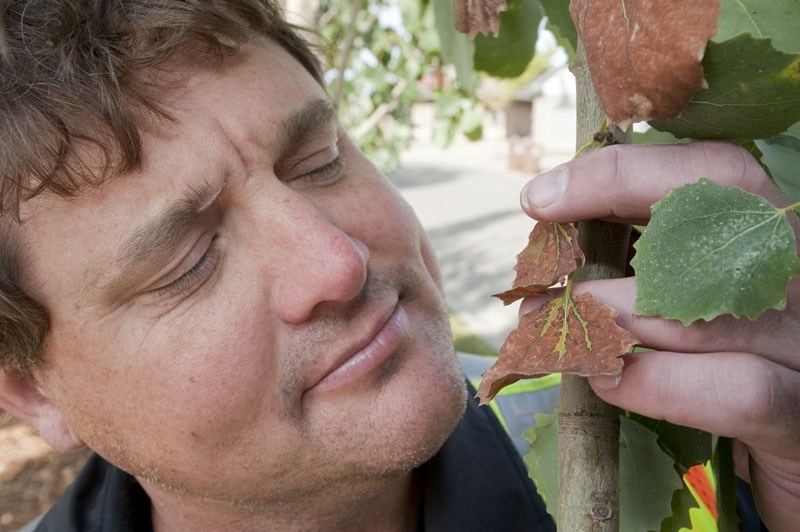City residents should keep a lookout this month for a fungal disease that's killing local poplars.
Public works crews are sweeping the city this week for signs of bronze leaf disease — an infamous fungus that slowly kills poplars. The disease affects some 16 species of poplar, and is known to turn leaves a brilliant bronze colour around this time of year.
City arborist Kevin Veenstra said crews surveyed about 400 poplars on city property earlier this month in response to calls from residents, says city arborist Kevin Veenstra, many of which were prompted by a recent news article on bronze leaf disease. About 16 per cent of the poplars had it, with four having enough of it that they will have to be removed. Most of the infected trees are in the North Ridge region.
The city is asking residents to watch poplars on their properties for signs of the disease.
This disease can kill 16 species of poplar, says plant pathologist Ieuan Evans, and has already wiped out whole tree stands in Manitoba.
"Two-thirds of the woodlots around here are trembling aspen," he says, referring to one vulnerable species. "If [the disease] moves into them, there will be constant damage."
Insidious killer
Arborists have been tracking bronze leaf disease in Alberta for about six years, says Jim Hole of Hole's Greenhouses. "It hasn't become a really devastating disease here yet, but it's showing up in patches."
Alberta Agriculture reports that it can be found in most Alberta cities and usually appears in late August and September.
The disease is caused by a fungus that attacks the leaves. of poplars, Veenstra says the . "The real interesting part is the veins [on the leaf ] stay green," he says, giving them a distinct appearance. Symptoms usually appear in late August and September, according to Alberta Agriculture.
Infested leaves will also tend to stay on a tree all winter, Hole adds, and will be completely bronze — not spotted brown, like in other diseases. They will also stay supple instead of going dry and crunchy.
The disease fruits from these leaves during the summer, Evans says, producing spores to infest other trees. Unchecked, it eventually spreads down the stem and kills the tree. "This disease is insidious," he says, as it slowly kills a tree over four to five years.
Treat by vigilance
The two most common victims of the disease in Alberta are the tower poplar and Swedish columnar aspen, Hole says. Both are easy to spot: they have white bark and branches that grow straight up, creating a column-like appearance.
There are no chemical treatments for bronze leaf, Evans says, so the only cure is amputation. Infested branches should be trimmed at least 10 inches from the site of the infection and tossed in the trash — not the compost, as the spores could survive composting.
Crews should finish pruning the infected poplars by the end of the month, Veenstra says — just in time for elm pruning season. Residents with infested branches should put them in their brown garbage bins or in the diseased branches pile at the compost yard.
Evans called for a provincial campaign to stop bronze leaf from taking off in Alberta. A similar campaign against Dutch elm disease, — which he helped start, — has effectively stopped that disease in its tracks. "We're the only jurisdiction [in North America] with healthy elms."
Residents should keep a close eye on their poplars if they want to stop bronze leaf, Evans says. "It would be a very sad thing if this thing got out of control."
Any questions on the disease should go to public works at 780-459-1557.




